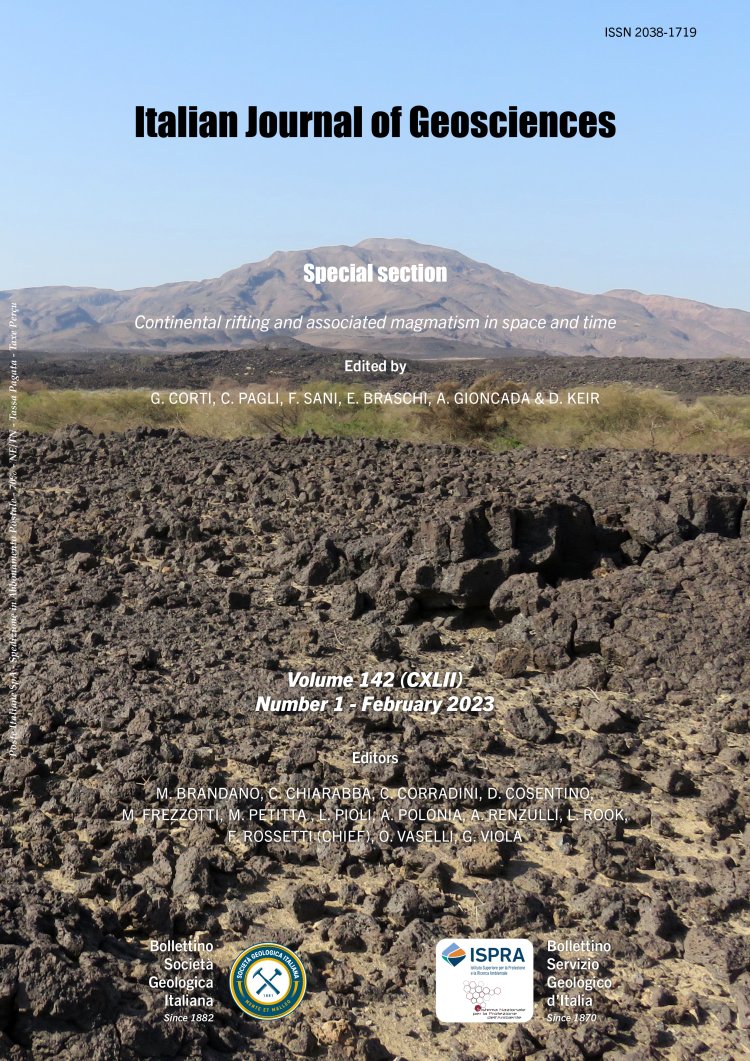
Tectono-magmatic evolution during the extensional phase of a Wilson Cycle: a review of the Alpine Tethys case and implications for Atlantic- type margins
Gianreto Manatschal1, Pauline Chenin1, Marc Ulrich1, Benoît Petri1, Mérédith Morin1 & Mélanie Ballay1
1Université de Strasbourg, CNRS, Institut Terre et Environnement de Strasbourg, UMR 7063, 5 rue Descartes, Strasbourg F-67084, France.
Corresponding author e-mail: manat@unistra.fr
DOI: https://doi.org/10.3301/IJG.2023.01
Volume: 142 (2023) f.1
Pages: 5-27
Abstract
Despite the recent progress in seismic imaging and dynamic modelling, the tectono-magmatic evolution during late orogenic extension and rifting is at present little understood. Answering questions such as when and where magma forms, how it percolates and how it is emplaced requires access to magmatic rocks from different crustal and mantle levels, which is impossible in modern rift systems. An alternative, presented in this study, is to use remnants of fossil extensional systems exposed in collisional orogens. Here we review the Permian to Early Cretaceous tectono-magmatic evolution recorded in the Alpine realm of Western Europe. While most of the previous studies reviewed the geochemical and petrological characteristics of the magmatic rocks, here we rely on a holistic approach to link the magmatic evolution to extensional processes on a large scale. We synthesize our observations on the timing and location of magma production in a Wheeler diagram. Our study shows that two major magmatic events can be defined: the first one took place during the Permian and was linked to post- orogenic extension of the Variscan belt. It affected a large portion of Western Europe, where it was responsible for significant sub-aerial volcanic activity, for the emplacement of massive magmatic additions at the base and within the crust, and for the depletion of the lower subcontinental lithospheric mantle. The second included several pulses of magmatic activity related to the multiphase rifting event that led to the successive opening of the Meliata-Vardar, Alpine Tethys and southern North Atlantic (proto-)oceanic domains. In the Alpine Tethys, the first rift-related magmatic activity was linked to melt infiltration within the subcontinental lithospheric mantle during the so-called necking stage. Basalts were emplaced only later, during and after mantle exhumation. Their chemical signature reflects the interaction between melts derived from Depleted Mid-oceanic ridge basalt Mantle (DMM) and the previously refertilized/infiltrated subcontinental mantle. Late alkaline magmatic activity post- dated breakup. A main result of this study is that the tectono-magmatic evolution of extensional systems cannot be explained by simple models using ß-factors or mantle temperatures alone but also needs to integrate the inheritance acquired during previous tectonic phases.
Keywords
Alps, Alpine Tethys, tectono-magmatic evolution, inheritance, post-orogenic evolution, magma-poor rift systems.
Get Full Text